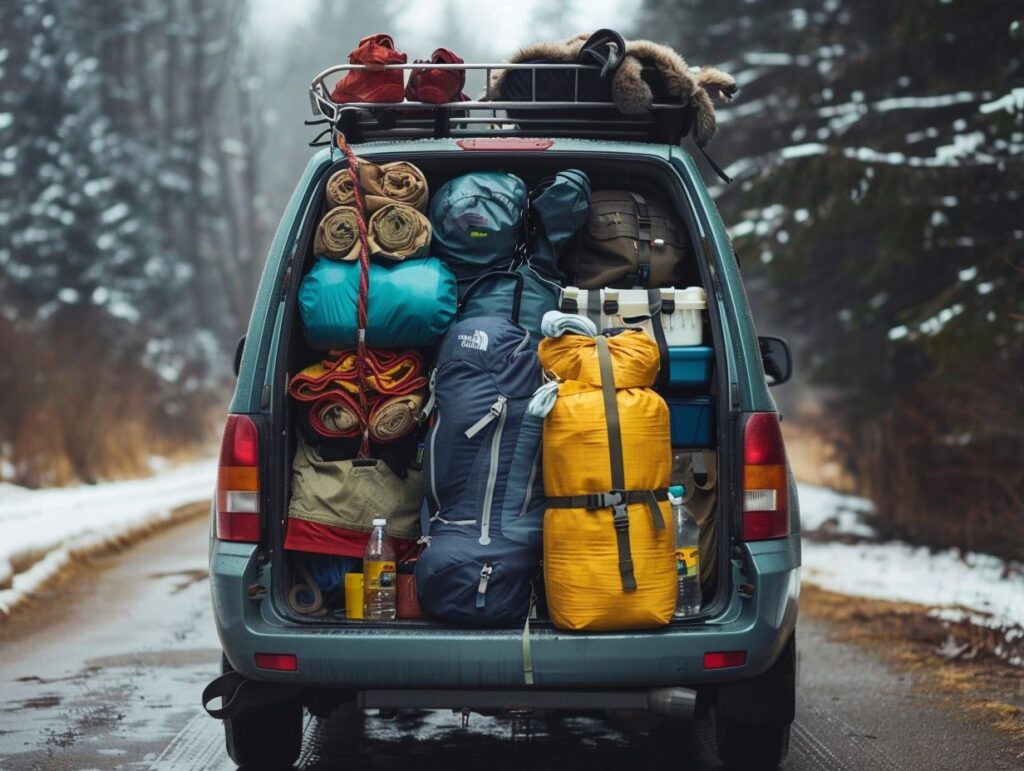Are you ready to embark on a camping adventure with your car?
Before you hit the road, there are a few important factors to consider. From choosing the right destination to stocking up on supplies, this article will guide you through the essentials of car camping.
We’ll also discuss how to properly prepare your vehicle for the journey, ensuring a safe and enjoyable experience.
So, grab your gear and get ready to explore the great outdoors with these helpful tips!
Key Takeaways:
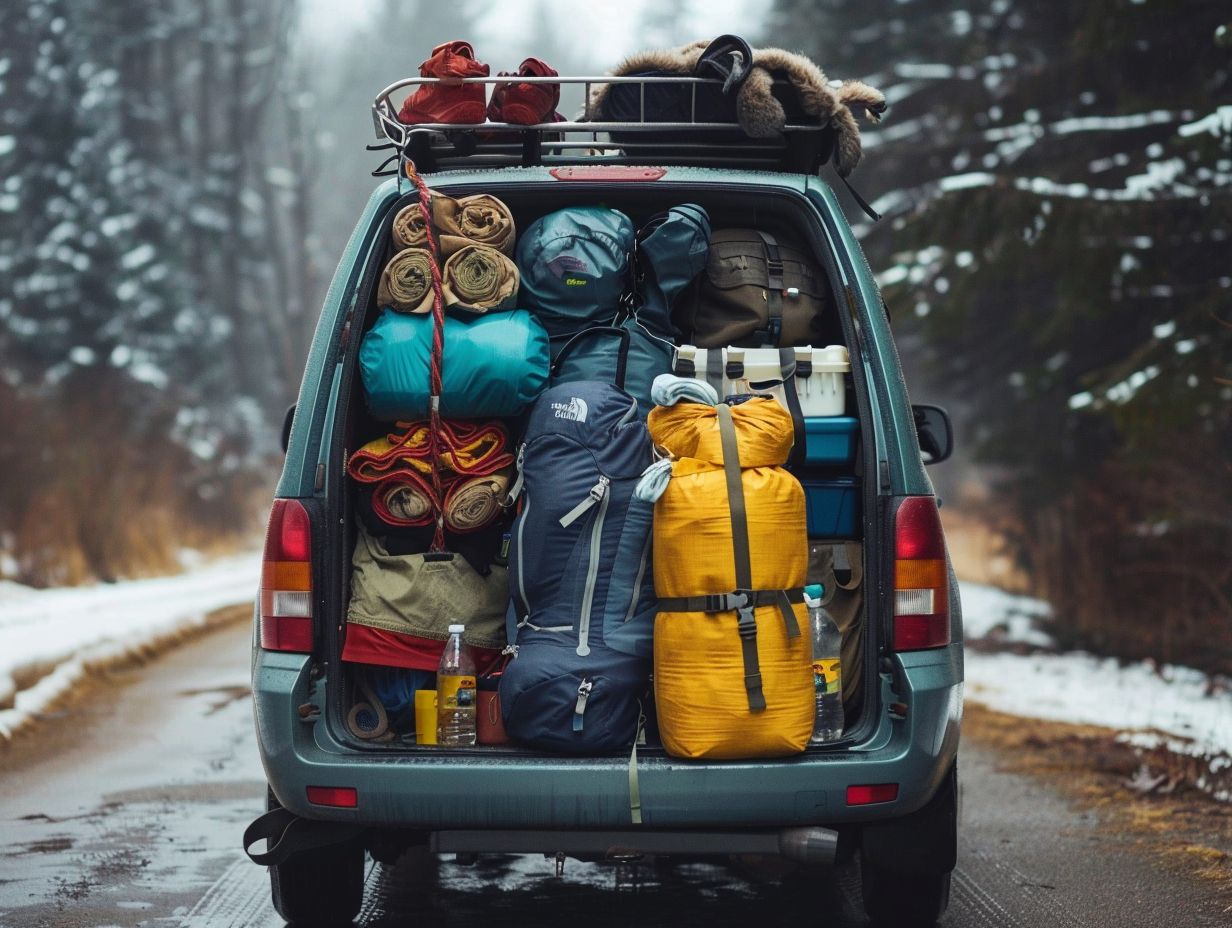
- Before going on a car camping trip, consider the destination, weather, duration, number of people, and terrain to ensure a successful and enjoyable trip.
- Be sure to pack essential supplies such as shelter, sleeping gear, cooking supplies, food and water, clothing, personal items, and emergency supplies.
- Prepare your car for the trip by checking tires, brakes, oil, battery, lights, fluid levels, and packing efficiently. Don’t forget to clean your car and plan your route beforehand.
Why Go Camping with Your Car?
Car camping presents a superior level of convenience and adaptability for individuals seeking to partake in outdoor excursions without the constraints associated with backpacking and transporting cumbersome equipment.
This camping style allows for the transportation of a greater quantity of essential items in one’s vehicle, enabling campers to pack more comfortably and include additional accessories that can enrich their camping experience. By bringing along camping chairs, cool boxes, portable barbecues, extra blankets, and pillows, individuals can establish a welcoming environment reminiscent of home.
The convenience of car camping affords travellers the opportunity to visit diverse locations without stringent restrictions on the quantity of provisions they can carry. This unrestricted accessibility permits individuals to derive as much pleasure from the journey itself as they do from the ultimate destination.
What Supplies Do You Need for Car Camping?
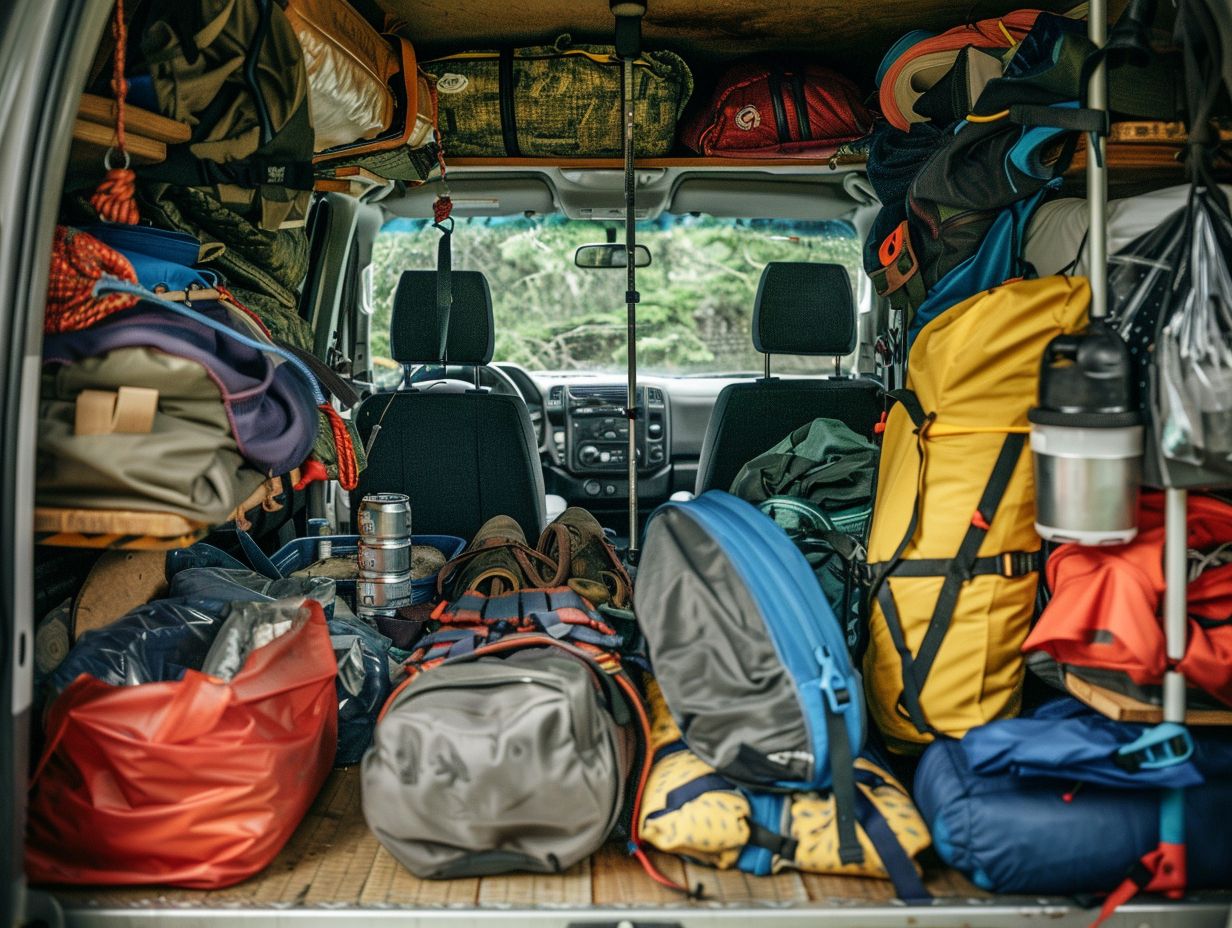
It is imperative to adequately equip oneself with the necessary supplies for a prosperous car camping expedition. This includes vital camping equipment, personal essentials, and effective packing techniques to guarantee the availability of all required items.
1. Shelter and Sleeping Gear
In terms of shelter and sleeping accommodation, tent camping is a widely favoured choice. However, car camping presents an option that enhances comfort and convenience. Car camping facilitates the inclusion of additional amenities due to the proximity of one’s vehicle.
By opting for car camping, individuals can establish a sleeping platform within the confines of their SUV or lorry, thereby fashioning a cosy sleeping area.
It is advisable to procure a premium-quality sleeping bag tailored to the prevailing climate conditions. Additionally, the acquisition of insulated sleeping mats or air mattresses can provide supplementary cushioning and insulation against the chilly ground.
The inclusion of a supportive pillow can also result in a significant improvement in one’s overall comfort and sleep quality throughout their outdoor adventures.
2. Cooking Supplies
An adequately equipped car camping kitchen is critical for meal preparation while on the go, ensuring that camp cooking becomes a convenient and enjoyable aspect of your journey.
Portable stoves play a crucial role in outdoor meal preparation by providing a reliable heat source to cook a variety of dishes. Plus stoves, possessing a quality set of cookware, including pots and pans, is essential for enhancing versatility in cooking methods.
Utensils such as spatulas, tongs, and knives are vital for food preparation, while food storage solutions like coolers and containers aid in preserving ingredients’ freshness.
When devising meal plans, it is advisable to opt for pre-prepared ingredients to streamline the cooking process in the camp kitchen. Emphasising the creation of nutritious and delectable dishes is key to maintaining optimal energy levels during your outdoor excursions.
3. Food and Water
Ensuring adequate food and water supplies is crucial for the success of any camping trip, requiring thorough preparation and the inclusion of essential items to maintain the freshness and accessibility of provisions. When planning meal choices, it is advisable to select items that are easy to prepare and do not require elaborate cooking equipment.
Preparatory measures such as marinating meats or chopping vegetables in advance can speed up the cooking process at the campsite. Using durable containers like cool boxes can help preserve perishable goods at low temperatures, while reusable water bottles are ideal for storing drinking water.
Possible menu options may include sandwiches, wraps, salads, and portable snacks like trail mix or cereal bars, allowing for quick and convenient meals on the go.
Furthermore, including non-perishable items such as nuts, dried fruit, and tinned food can be useful in emergencies or situations where cooking facilities are limited.
4. Clothing and Personal Items
Selecting appropriate attire and personal belongings is crucial for ensuring comfort and readiness during your car camping excursion. When preparing for your outdoor endeavor, it is important to take into account the prevailing weather conditions and the nature of activities planned.
In warmer climates, it is advisable to include lightweight, breathable clothing items such as shorts, t-shirts, and hats to remain cool and shielded from the sun’s rays.
Conversely, in colder environments, layering becomes imperative – incorporating long-sleeve shirts, jumpers, and thermal leggings is recommended to preserve warmth. Additionally, it is essential to pack waterproof jackets and durable hiking boots to accommodate unpredictable weather patterns and demanding terrains.
To maintain personal hygiene and feel rejuvenated throughout the duration of your trip, it is advisable to include toiletries like eco-friendly soap, toothbrush, toothpaste, and wet wipes in your provisions.
5. Emergency Supplies
It is imperative to have emergency supplies readily available, such as a well-equipped emergency kit and a solar-powered mobile phone charger, to ensure safety during a car camping expedition.
Within the emergency kit, one should ensure the presence of essential items including plasters, gauze dressings, adhesive tape, antiseptic wipes, tweezers, scissors, and painkillers to address any injuries that may occur.
Additionally, tools like a multi-tool knife, parcel tape, and a torch can prove to be invaluable in a variety of scenarios. Communication devices like a two-way radio or a whistle can assist in signalling for assistance.
It is important to emphasise that simply possessing these supplies is not sufficient; one must also be adept at utilising them effectively when confronted with unexpected situations. Proactiveness and preparedness can play a pivotal role in ensuring a secure camping experience.
How to Prepare Your Car for a Camping Trip?
Ensuring the readiness of your vehicle for a camping excursion entails a thorough examination and completion of maintenance procedures to guarantee safety, reliability, and comfort throughout all of your journeys.
1. Check Your Tires
Inspecting the tyres is a fundamental practice to ensure safety while car camping, as adequate tyre maintenance plays a critical role in preventing breakdowns and accidents during the journey. It is imperative to routinely assess the tyre pressure, tread depth, and general condition before commencing any trip. Properly inflated tyres contribute to fuel efficiency and promote improved traction on the road.
Thoroughly examining the tyres for indications of wear, bulges, or foreign objects embedded in the treads is essential to mitigate the risk of blowouts or punctures. It is advisable to have a spare tyre and a tyre repair kit readily available in the vehicle to address unforeseen circumstances. Proactive tyre maintenance not only enhances safety but also extends the longevity of the tyres.
2. Inspect Your Brakes
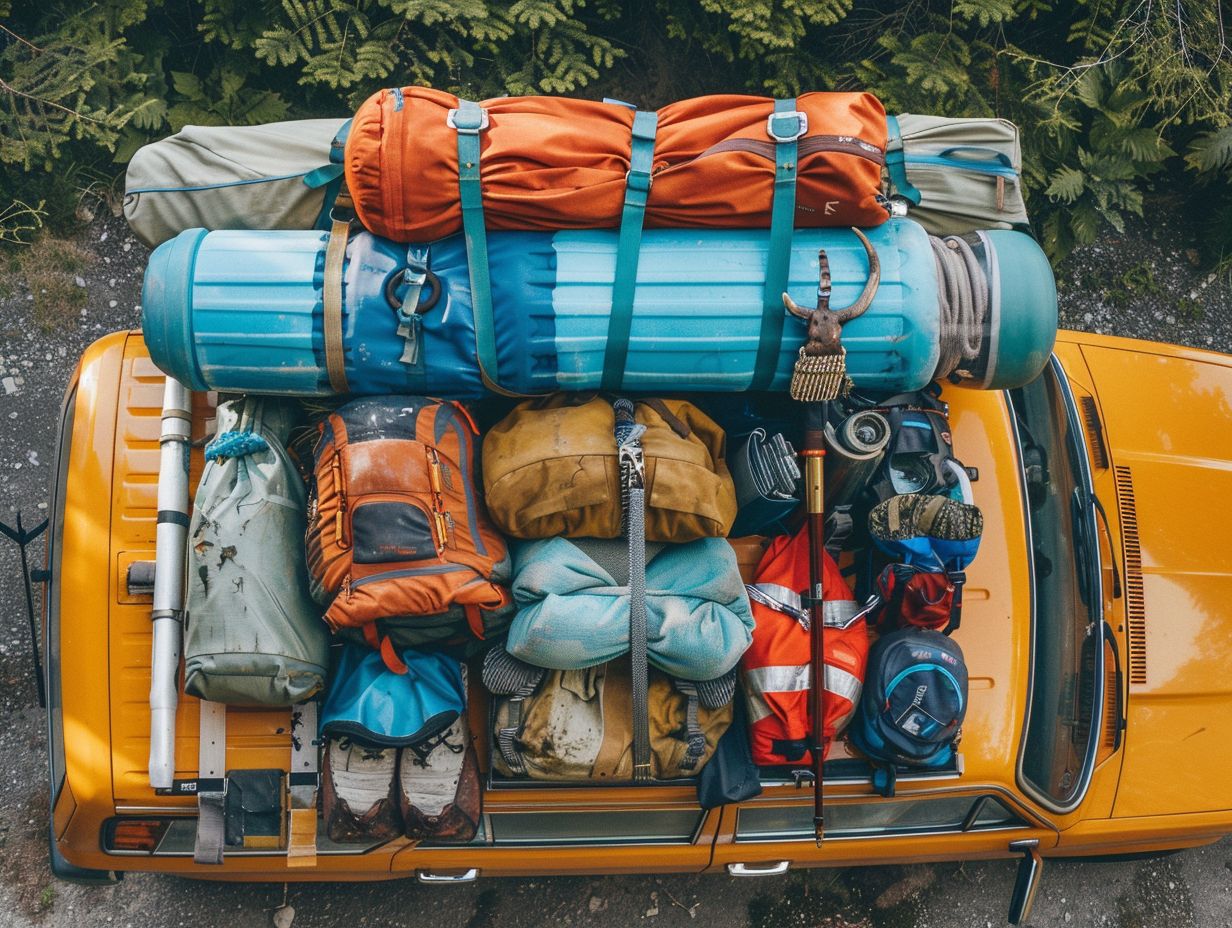
The inspection of the brakes on a car is essential for ensuring the safety and performance of the vehicle, particularly when traversing various terrains during a camping trip. Routine maintenance of the brakes should include an examination of the thickness of the brake pads to check that they have not deteriorated beyond a safe level.
Equally important is the vigilance in monitoring the levels of brake fluid, as inadequate fluid can cause brake failure. Furthermore, it is advisable to examine the whole braking system for any signs of deterioration, corrosion, or leaks.
Carrying out a basic assessment of the brakes involves an initial auditory check for any unusual sounds during braking. It is also recommended to observe any vibrations or changes in braking responsiveness. If any of these signs are noticed or if there is uncertainty about the condition of the brakes, it is wise to seek the expertise of a professional to prevent any potential safety issues on the road.
3. Change Your Oil
It is imperative to change your car’s oil before embarking on a car camping trip to ensure optimal engine performance and efficiency.
To initiate the oil change process, it is recommended to park the vehicle on a level surface and allow the engine to cool down adequately.
Subsequently, gather the requisite materials including a new oil filter, the appropriate type and quantity of oil specified in the car’s manual, a spanner, an oil pan, and protective gloves. Identify the oil drain plug positioned underneath the vehicle and position the oil pan beneath it.
Utilise the spanner to loosen the plug and facilitate the complete drainage of the old oil. Following this, replace the old filter with a new one, ensuring a secure installation. Proceed to refill the engine with fresh oil, verify the oil level, and dispose of the used oil in a responsible manner.
Regular oil changes are pivotal in mitigating engine damage, optimising your vehicle’s performance, and extending its longevity.
4. Check Your Battery
Inspecting the car battery is a critical aspect of preparing for a car camping trip, as a reliable battery is essential to prevent being stranded in remote locations. To assess the battery’s charge level, a multimeter can be used. By connecting the red probe to the positive terminal and the black probe to the negative terminal, an accurate reading can be obtained.
Regularly cleaning the battery terminals is vital to ensure proper connectivity and reduce electrical issues. The presence of corrosion on the terminals may indicate an underlying problem that requires immediate attention.
When taking part in car camping activities, carrying a portable jump starter or battery charger can offer reassurance in case of unexpected battery-related difficulties, enabling efficient battery recharging while on the go.
5. Test Your Lights
It is crucial for ensuring safety during car camping to test all vehicle lights, including headlights, brake lights, and indicators. This practice is essential to maintain visibility and enhance communication with other drivers on the road.
Before setting off on a journey, it is advisable to conduct a thorough check of each type of light on the vehicle. To start, the functionality of the headlights should be tested to ensure that they are operating correctly. Afterwards, the brake lights should be checked by having an individual press the brake pedal while the observer checks from the rear of the vehicle.
Also, it is important to test the indicators for proper operation. If any bulbs are burnt out or flickering, immediate replacement is necessary. Working lights are essential for ensuring safe driving practices, especially in low-light conditions or when traveling at night.
6. Check Your Fluid Levels
Inspecting all fluid levels, such as coolant, brake fluid, and windscreen washer fluid, is an essential aspect of vehicle maintenance prior to embarking on a camping expedition.
Ensuring that each fluid reservoir contains the appropriate quantity can be easily accomplished by identifying the corresponding container beneath the bonnet and utilising the dipstick or sight glass for precise measurements.
When replenishing the coolant, it is advised to loosen the cap when the engine is cool and add a suitable mixture of coolant and water as necessary. Similarly, it is important to maintain brake fluid levels within the designated range, between the minimum and maximum indicators, whilst ensuring that the windscreen washer fluid is replenished up to the specified level.
Sustaining these fluid levels is imperative for achieving optimal vehicle performance and ensuring road safety.
7. Pack Efficiently
Efficient packing is essential for optimising space and convenience in your vehicle, ensuring that all camping essentials are easily accessible while avoiding clutter.
One valuable suggestion for organising camping gear is to categorise items into containers or storage solutions. This approach not only facilitates organisation but also simplifies the process of locating specific items when necessary. Prioritising the placement of items based on accessibility can result in time and effort savings during the trip.
By positioning frequently used items within easy reach, one can avoid the inconvenience of searching through all equipment. It is important to recognise that travelling light offers several advantages, including reducing the strain on your vehicle, expediting setup and packing procedures, and enhancing flexibility in your travel arrangements.
8. Clean Your Car
Preparing your vehicle before setting off on a camping trip serves to optimise comfort and organisation, streamlining the process of packing and accessing essential camping gear and supplies.
Regular hoovering of the interior effectively removes accumulated dirt, crumbs, and debris, thereby maintaining a clean and welcoming environment for your upcoming journey. Additionally, the thorough wiping down of surfaces such as the dashboard, seats, and cup holders not only enhances the overall visual appeal but also prevents the accumulation of dust and grime.
Furthermore, the act of decluttering your vehicle by removing unnecessary items creates additional space for both passengers and equipment, thereby facilitating a more seamless and enjoyable camping experience.
9. Plan Your Route
Properly planning the route for a car camping trip in advance is crucial for ensuring a seamless and pleasant journey, enabling individuals to anticipate and overcome potential challenges while maximising the overall travel experience. Strategic route mapping facilitates the organisation of stops for refuelling, dining, and resting, guaranteeing the availability of essential amenities throughout the journey.
Integration of navigation tools and applications serves the dual purpose of maintaining itinerary adherence and unveiling obscure attractions and points of interest. These technological aids furnish real-time updates on traffic flow, road construction areas, and viable alternative routes, thereby augmenting the quality of the travel experience.
Allocating time for periodic breaks not only fosters traveller revitalisation but also affords the opportunity to fully appreciate the scenic beauty of the landscapes encountered during the car camping expedition.
10. Practice Setting Up Camp
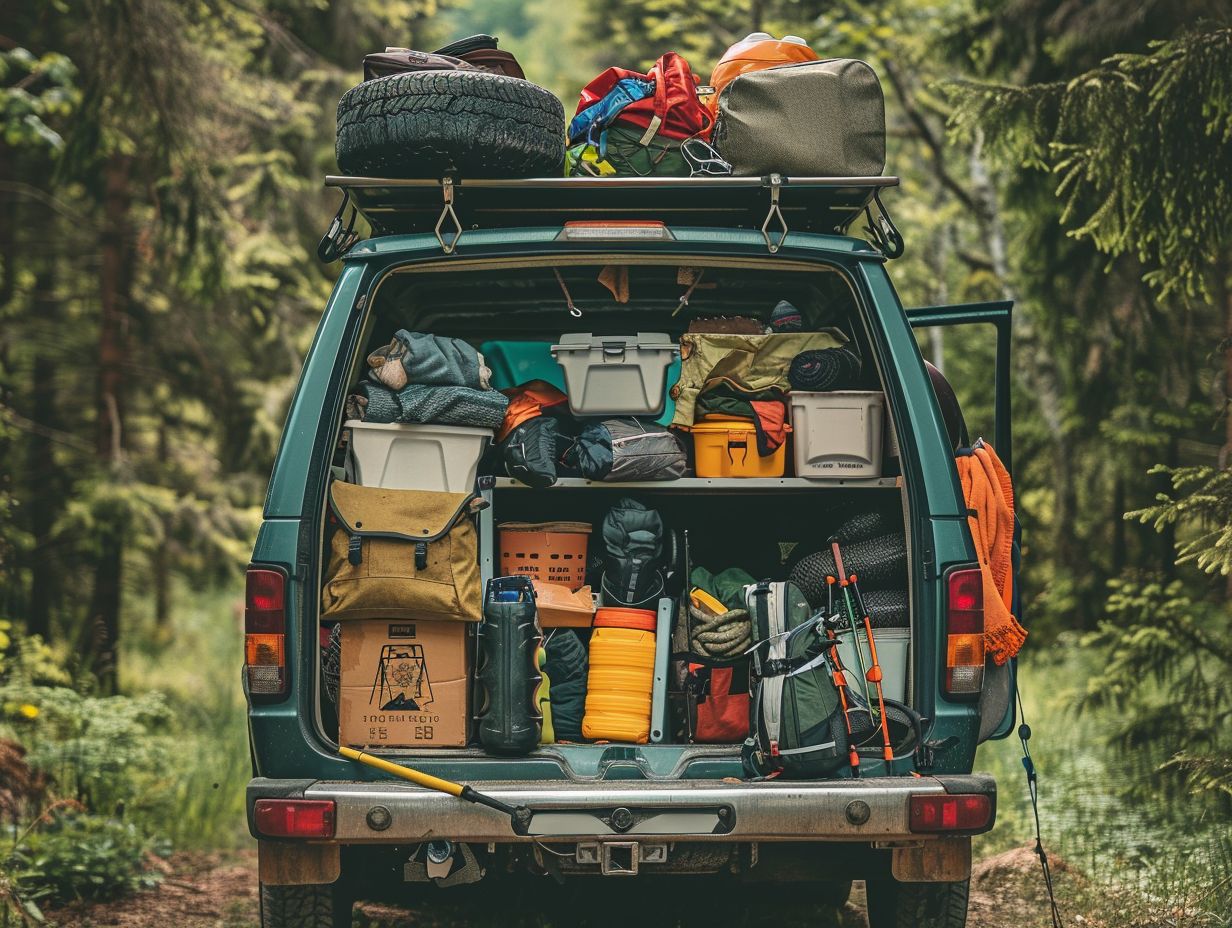
Engaging in the practice of setting up one’s car camping equipment before embarking on a trip can be advantageous, as it aids in saving time and diminishing stress levels. This pre-trip preparation ensures that individuals are well-acquainted with their gear and possess a solid understanding of camping fundamentals.
The familiarity gained with one’s equipment can be particularly advantageous during activities such as tent setup. A practical suggestion to aid in this process is to lay out all tent components beforehand and practice assembling the tent structure in a backyard setting.
This approach enables individuals to grasp a comprehensive understanding of how each element interconnects, thereby facilitating a streamlined setup process upon arriving at the campsite.
Moreover, organising the sleeping area with comfortable bedding and adequate insulation can significantly enhance one’s comfort levels during the night. Additionally, arranging cooking supplies in a convenient and easily accessible manner can expedite meal preparation, thereby enabling individuals to savour delectable dishes under the starlit sky.
Frequently Asked Questions
What should I check before taking my car on a camping trip?
Before hitting the road, it’s important to check your car’s tyre pressure, oil levels, and make sure all lights are working properly. You should also inspect the spare tyre and ensure it is in good condition.
How much weight can my car safely carry for a camping trip?
It’s important to not overload your car, as it can affect the handling and performance. Check your car’s manual for the maximum weight capacity and try to stay within that limit. Consider using a roof rack or trailer for extra storage if needed.
Should I invest in any specific camping gear for my car?
Investing in a rooftop tent, a portable stove, and a cooler can make your camping trip more comfortable and convenient. However, it’s important to consider the weight and size of these items and make sure they are suitable for your car.
What should I pack in my car for a camping trip?
In addition to your camping gear, it’s important to pack emergency supplies such as a first aid kit, jump leads, and tools for basic car repairs. It’s also a good idea to bring extra water, snacks, and a map in case of any unforeseen circumstances.
How can I protect my car from wildlife while on a camping trip?
To protect your car from wildlife, make sure to keep all food and scented items stored away properly and out of reach. You can also invest in a bear-proof container to store food and hang it away from your campsite. Avoid leaving any rubbish or food scraps in or around your car.
What should I do if my car breaks down during a camping trip?
If your car breaks down during a camping trip, stay calm and try to safely pull over to the side of the road. Use your emergency supplies and try to assess the issue. If you are unable to fix the problem, call a breakdown service or roadside assistance for help.

